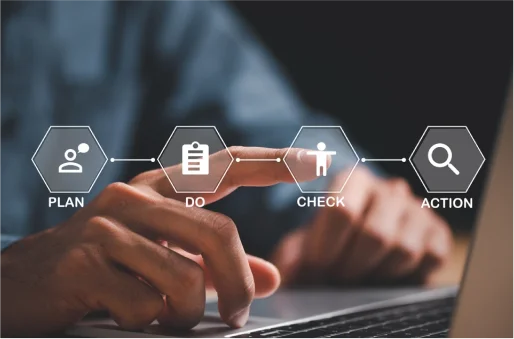
The healthcare industry is on the brink of a technological revolution, and medical billing is no exception. As we approach 2025, healthcare providers must stay informed about the latest trends shaping the future of medical billing. From AI-powered automation to advanced cybersecurity measures, these innovations aim to streamline billing processes, minimize errors, and boost revenue. Let’s explore the top trends in medical billing that are set to redefine the landscape in the coming year.
AI Integration in Medical Billing
Artificial Intelligence (AI) is rapidly transforming the medical billing industry. AI-driven software can now automate repetitive tasks such as coding, claim scrubbing, and payment posting. By leveraging AI, healthcare providers can reduce human error, speed up billing cycles, and enhance accuracy. AI algorithms also predict claim denials by analyzing historical data, allowing staff to address potential issues before submission.
Automated Claim Processing
Gone are the days of manual claim submissions. Automated claim processing systems use electronic health records (EHR) to submit claims instantly, reducing processing time and improving cash flow. These systems identify errors in real-time, ensuring claims are accurate and reducing the risk of denials. This trend not only boosts efficiency but also frees up staff to focus on more complex billing tasks.
Enhanced Cybersecurity Measures
With the increasing shift to digital platforms, cybersecurity has become a top priority. Healthcare organizations are implementing robust encryption protocols and multi-factor authentication to protect sensitive patient data. Advanced cybersecurity strategies help prevent data breaches, ensuring that billing records remain secure and compliant with regulations like HIPAA.
Patient-Centric Billing Solutions
Patients are now demanding more transparency in their medical bills. As a result, healthcare providers are adopting patient-centric billing solutions that offer clear, itemized statements and user-friendly online payment portals. These tools not only enhance the patient experience but also encourage faster payments by offering flexible options such as payment plans and automated reminders.
Blockchain Technology
Blockchain is emerging as a game-changer in medical billing. This decentralized technology creates secure, tamper-proof records of billing transactions, ensuring data integrity and transparency. Blockchain reduces fraud, simplifies claim audits, and accelerates reimbursements by providing real-time access to billing data for all authorized parties.
Telehealth Billing Adaptations
As telehealth services continue to grow, so does the need for accurate telehealth billing. In 2025, medical billing systems will further adapt to accommodate virtual care, ensuring that telehealth services are properly coded and reimbursed. Providers will need to stay updated on changing regulations and payer policies to prevent claim denials.
Data-Driven Revenue Cycle Management (RCM)
Data analytics is playing a vital role in revenue cycle management. Advanced RCM platforms use data insights to identify trends, track claim statuses, and highlight areas for improvement. These systems provide real-time reports that help healthcare practices make informed decisions to optimize revenue and reduce losses.
Outsourcing Medical Billing Services
Many healthcare providers are turning to third-party billing companies to manage their revenue cycles. Outsourcing medical billing allows practices to focus on patient care while experts handle claim submissions, payment posting, and denial management. This trend is expected to grow in 2025 as practices seek to cut costs and improve billing accuracy.
Real-Time Eligibility Verification
Real-time eligibility verification tools enable staff to check a patient’s insurance coverage instantly. This reduces claim denials due to coverage issues and ensures that billing teams have accurate information before providing services. In 2025, more practices will integrate these tools to streamline the billing workflow.
Regulatory Compliance Updates
With ever-evolving healthcare regulations, staying compliant is crucial. Medical billing systems are now integrating automated compliance checks to ensure claims meet federal and state requirements. These updates help prevent costly penalties and keep practices aligned with the latest legal standards.
Final Thoughts
The medical billing landscape is rapidly evolving, driven by technological advancements and changing patient expectations. As we move into 2025, healthcare providers must embrace these trends to optimize their revenue cycles, reduce errors, and enhance patient satisfaction. By staying ahead of the curve, practices can secure their financial health and deliver a seamless billing experience for both patients and providers.
Staying informed and proactive is key to thriving in this dynamic environment. Is your practice ready for the future of medical billing?






